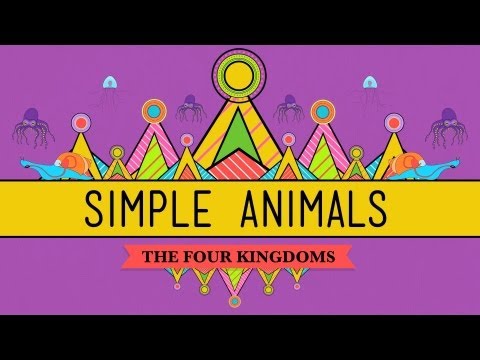14.22: Putting It Together- Invertebrates
- Page ID
- 44723
\( \newcommand{\vecs}[1]{\overset { \scriptstyle \rightharpoonup} {\mathbf{#1}} } \) \( \newcommand{\vecd}[1]{\overset{-\!-\!\rightharpoonup}{\vphantom{a}\smash {#1}}} \)\(\newcommand{\id}{\mathrm{id}}\) \( \newcommand{\Span}{\mathrm{span}}\) \( \newcommand{\kernel}{\mathrm{null}\,}\) \( \newcommand{\range}{\mathrm{range}\,}\) \( \newcommand{\RealPart}{\mathrm{Re}}\) \( \newcommand{\ImaginaryPart}{\mathrm{Im}}\) \( \newcommand{\Argument}{\mathrm{Arg}}\) \( \newcommand{\norm}[1]{\| #1 \|}\) \( \newcommand{\inner}[2]{\langle #1, #2 \rangle}\) \( \newcommand{\Span}{\mathrm{span}}\) \(\newcommand{\id}{\mathrm{id}}\) \( \newcommand{\Span}{\mathrm{span}}\) \( \newcommand{\kernel}{\mathrm{null}\,}\) \( \newcommand{\range}{\mathrm{range}\,}\) \( \newcommand{\RealPart}{\mathrm{Re}}\) \( \newcommand{\ImaginaryPart}{\mathrm{Im}}\) \( \newcommand{\Argument}{\mathrm{Arg}}\) \( \newcommand{\norm}[1]{\| #1 \|}\) \( \newcommand{\inner}[2]{\langle #1, #2 \rangle}\) \( \newcommand{\Span}{\mathrm{span}}\)\(\newcommand{\AA}{\unicode[.8,0]{x212B}}\)
As we’ve seen, invertebrates include a broad scope of animals, from the simplest of animals—the sponges—to the complex arthropods and annelids. As you review the phyla we’ve discussed in this lesson, remember the characteristics that set apart each phyla. Remember: animals are grouped together based on their structure and appearance.
Simple Animals
This video introduces us to the “simplest” of the animals. We differentiate animals by the number of tissue layers they have, and by the complexity of those layers.
Complex Animals
This video continues our exploration of invertebrates. We discuss the more complex annelids and arthropods.
Contributors and Attributions
CC licensed content, Original
- Putting It Together: Invertebrates. Authored by: Shelli Carter and Lumen Learning. Provided by: Lumen Learning. License: CC BY: Attribution
All rights reserved content
- Simple Animals: Sponges, Jellies, & Octopuses - Crash Course Biology #22. Authored by: CrashCourse. Located at: https://youtu.be/tIfsHPpkSPs. License: All Rights Reserved. License Terms: Standard YouTube license
- Complex Animals: Annelids & Arthropods - CrashCourse Biology #23. Authored by: CrashCourse. Located at: https://youtu.be/YQb7Xq0enTI. License: All Rights Reserved. License Terms: Standard YouTube license



